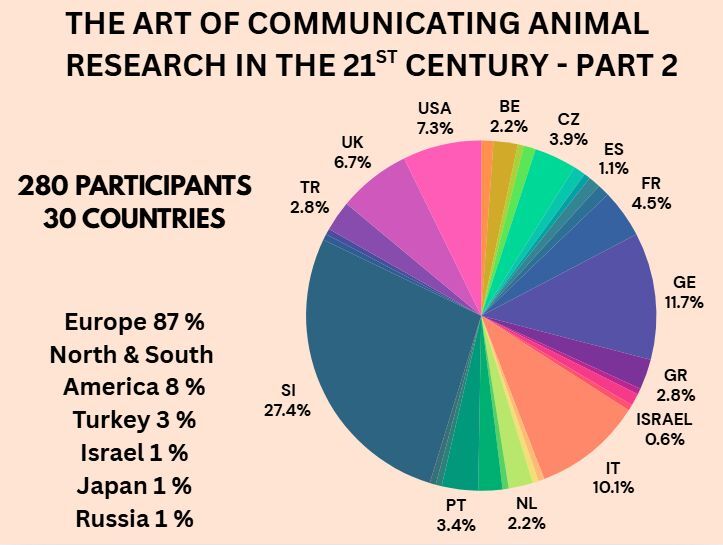The second part of our COST TEATIME webinar, “The Art of Communicating Animal Research in the 21st Century,” brought together a dynamic group of experts in science communication, ethics, AI, and public engagement to explore how digital tools can reshape the way we talk about animal research. This session, held on May 7 2025, focused on practical ways to use artificial intelligence and social media to foster transparency, reach wider audiences, and handle the ethical complexities of communicating research involving animals. The goal was clear: to rethink how we, as a scientific community, share and shape the narrative in the digital age.
Webinar was organized by Maša Čater (University of Ljubljana, European Animal Research Association Ambassador), who opened the session by emphasizing the power of social media in building transparency and global visibility. She encouraged researchers to take initiative in leading the conversation about their work—before controversy strikes. Her message was clear: communication should be proactive, not reactive.
Stefano Gaburro (CCC) followed with practical strategies on using LinkedIn and AI tools to communicate more transparently and effectively. He stressed that scientists don’t need to become influencers, but they do need to learn how to present their work clearly and authentically in the online space.
Damien Huzard (University of Montpellier, NeuroNautix) introduced an innovative tool called LiPT (LinkedIn PostTechnician), designed to help scientists write more strategic, engaging, and understandable posts on LinkedIn. His contribution highlighted how even simple language tweaks can drastically improve a post’s impact.
Debora Bogani (Mary Lyon Centre, MRC Harwell) brought a critical ethical lens to the conversation, raising important questions about the responsible use of AI in scientific communication. She reminded us that while AI can be helpful, it must be used with caution, especially in fields where public sensitivity is high—like animal research.
Nuno Miguel Gonçalves (EARA) demonstrated how AI tools like ChatGPT can be harnessed to improve the clarity of Non-Technical Summaries (NTS), making complex research more accessible and supporting the promotion of the 3Rs (Replacement, Reduction, and Refinement) in animal research.
Inês Serrenho (EARA) drew from successful outreach campaigns such as #BOARD to show how scientists can effectively counter misinformation and build trust with the public through thoughtful use of social media. Her examples highlighted the importance of combining transparency with creativity.
Finally, Monique Havermans (EARA) addressed one of the toughest parts of science communication—dealing with negativity. She offered thoughtful strategies for handling critical or hostile responses online, stressing the long-term value of consistency, honesty, and empathy in rebuilding public trust.
The session welcomed 280 participants from 30 countries across the globe, demonstrating the growing international interest in improving how we communicate about animal research. The diverse audience contributed to vibrant discussions and reflected the universal relevance of the topic. This webinar underscored that AI and social media are not merely tools for outreach—they are vital components of a broader cultural shift toward open, ethical, and inclusive science communication. As researchers, communicators, and institutions, we must continue to evolve our strategies and embrace these platforms to engage meaningfully with society.
If you missed the webinar, the full recordings are available online on TEATIME YouTube channel:
